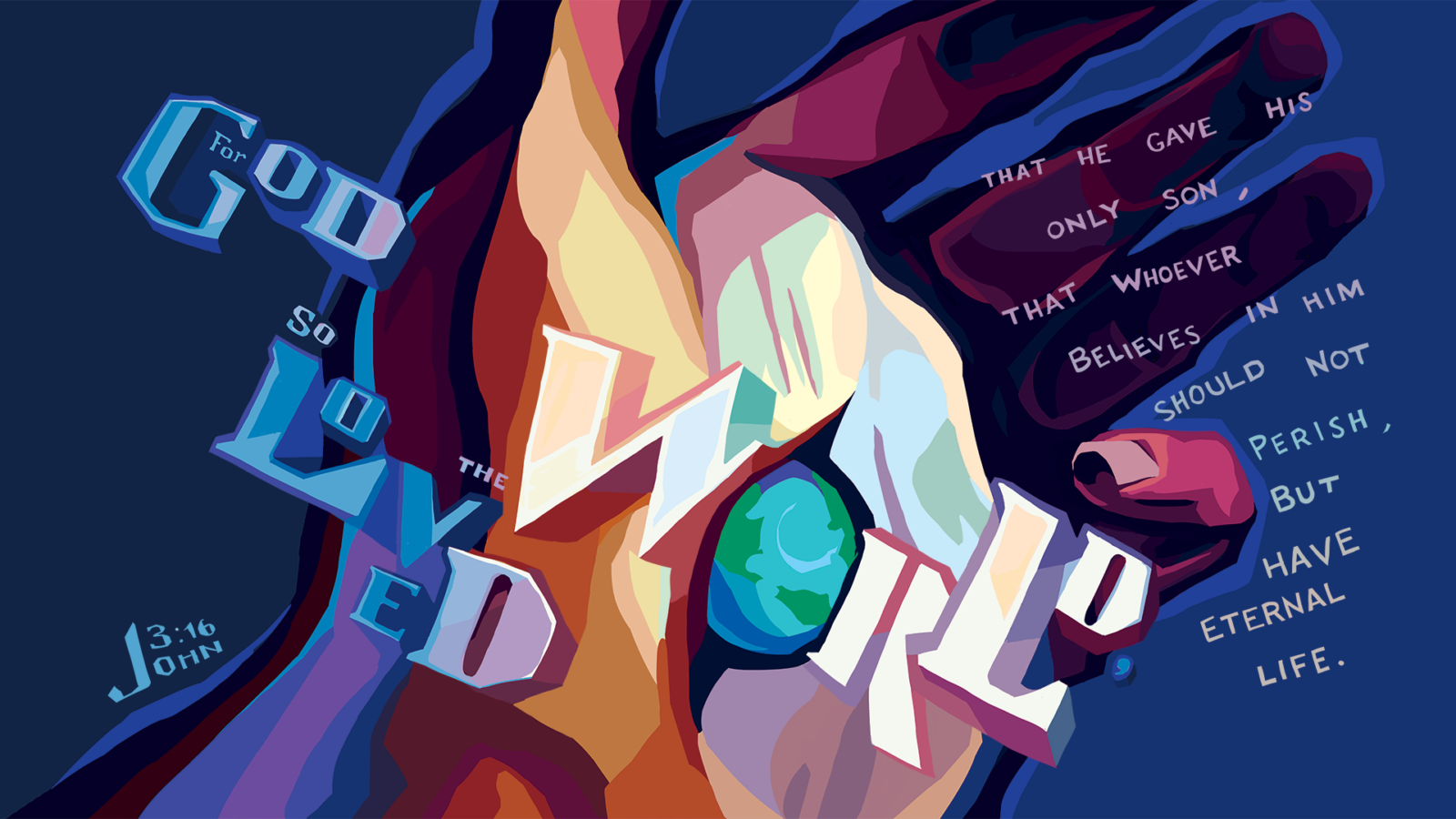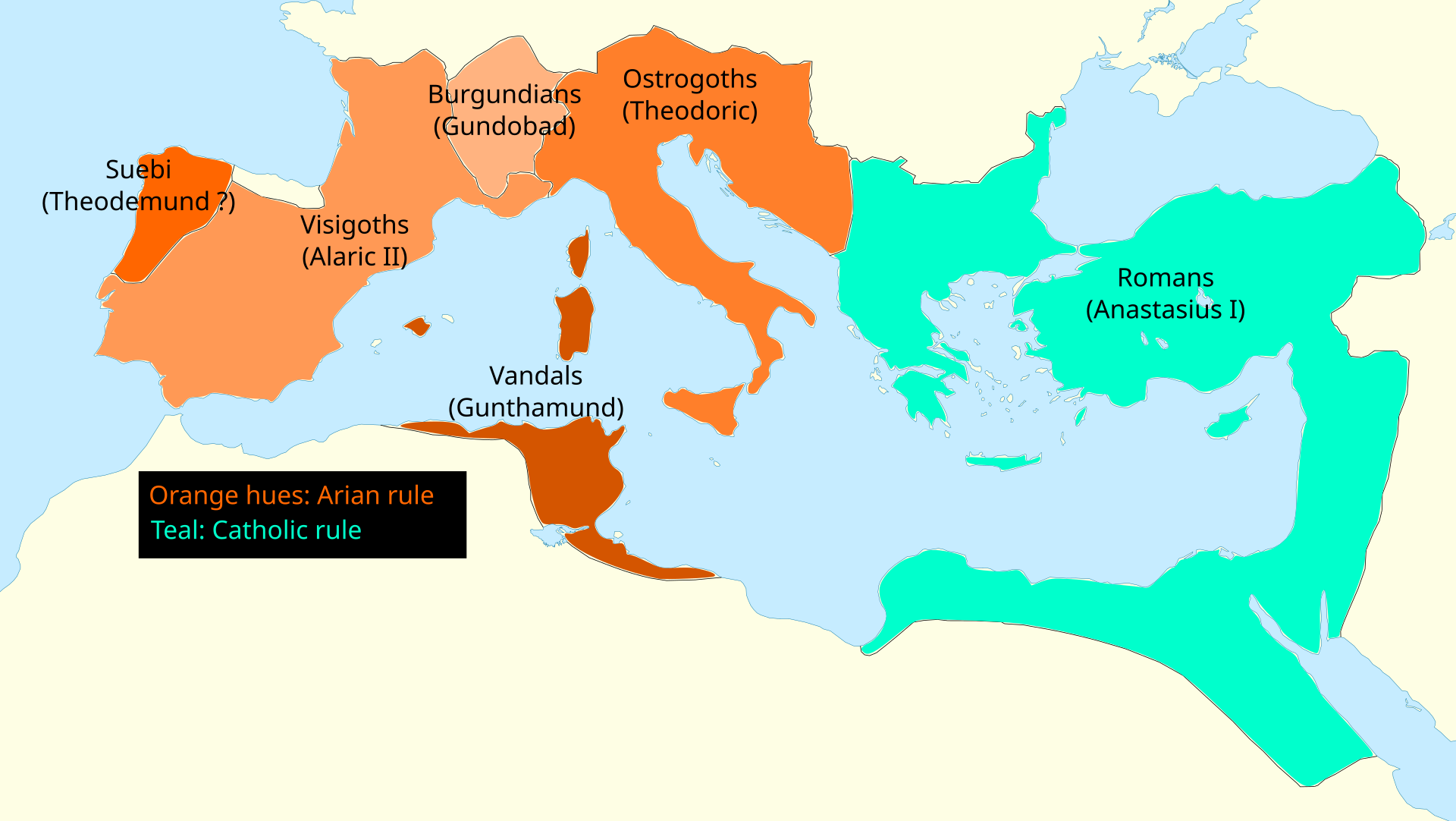John 3:16 is the most famous verse in the New Testament (and probably the Bible itself). To quote from the ESV:
“For God so loved the world, that he gave his only Son, that whoever believes in him should not perish but have eternal life.”
Its an inspiring verse that beautifully sums of God’s plan for the redemption and salvation of humanity. It’s a masterful plan that was hinted at throughout the old testament but never outright stated until the New Testament. This is because as the Apostle Paul stated in 1 Corinthians 2:8:
“But we impart a secret and hidden wisdom of God, which God decreed before the ages for our glory. 8 None of the rulers of this age understood this, for if they had, they would not have crucified the Lord of glory.”
Arius, as depicted in Byzantine art of the First Council of Nicaea
The inevitable thing, perhaps, is that even after having the plan of salvation explained; people struggled to understand just what it meant to be “The Only Begotten Son of God.” In the early years of the Church, trying to wrap their heads around the concept of the Trinity led to things such as the Arian Heresy. Arianism stated that Jesus was created by God and was therefore subordinate to The Father. Encyclopedia Britannica explains:
Arius’s basic premise was the uniqueness of God, who is alone self-existent (not dependent for its existence on anything else) and immutable; the Son, who is not self-existent, cannot therefore be the self-existent and immutable God. Because the Godhead is unique, it cannot be shared or communicated. Because the Godhead is immutable, the Son, who is mutable, must, therefore, be deemed a creature who has been called into existence out of nothing and has had a beginning. Moreover, the Son can have no direct knowledge of the Father, since the Son is finite and of a different order of existence.¹
Arius, the founder of the heresy, wrote the following succinct explanation in a letter to a bishop in Constantinople:
We are persecuted because we say that the Son has a beginning but that God is without beginning.²
It isn’t hard to understand how the heresy rose up and took root with some Christians. They were trying to wrap their minds around the concept of the Trinity and how to worship the Father, Son, and Holy Spirit as one God. As humans seem to do when they can’t really comprehend something, they warped ideas until they fit comprehension. If Jesus was created, than He wasn’t God and the worship of one God becomes much easier. Instead of acknowledging that God is so foreign and complex that we can only ever understand certain aspects as finite beings, they tried to force everything into a mold that fit their comfort zone.
Spread of Arian kingdoms as of 495 AD. CC BY-SA 4.0 and credited to PioGal / Danquebec.
As you can see from the map above, Arianism became a big deal. In 325 AD Emperor Constantine (yes that Constantine) called for an assembly of bishops to put out an official stand on Arianism. This was known as the First Council of Nicaea and the result was the Nicene Creed. You will probably recognize large parts of this as the creed said by Christians in many services:
We believe in one God, the Father Almighty, Maker of all things visible and invisible.
And in one Lord Jesus Christ, the Son of God, begotten of the Father [the only-begotten; that is, of the essence of the Father, God of God], Light of Light, very God of very God, begotten, not made, being of one substance with the Father; by whom all things were made both in heaven and on earth;
Who for us men, and for our salvation, came down and was incarnate and was made man;
He suffered, and the third day He rose again, ascended into heaven; from thence He shall come to judge the quick and the dead.
And in the Holy Ghost.
But those who say: “There was a time when he was not”; and “He was not before he was made”; and “He was made out of nothing,” or “He is of another substance” or “essence,” or “The Son of God is created,” or “changeable,” or “alterable”—they are condemned by the holy catholic and apostolic Church.
While the idea of the Trinity remained standard in the Roman Empire (mainly in the East due to the fall of Rome), to the West Arianism took hold with the Germanic tribes. This led to all kinds of wars and executions for hundreds of years until Arianism was mostly suppressed in the 6th and 7th centuries AD. Things also didn’t end well for its founder. The death of Arius occurred in 336 AD and was described (by an enemy so take it with a grain of salt) as follows:
It was then Saturday, and Arius was expecting to assemble with the church on the day following: but divine retribution overtook his daring criminalities. For going out of the imperial palace, attended by a crowd of Eusebian partisans like guards, he paraded proudly through the midst of the city, attracting the notice of all the people. As he approached the place called Constantine’s Forum, where the column of porphyry is erected, a terror arising from the remorse of conscience seized Arius, and with the terror a violent relaxation of the bowels: he therefore enquired whether there was a convenient place near, and being directed to the back of Constantine’s Forum, he hastened thither. Soon after a faintness came over him, and together with the evacuations his bowels protruded, followed by a copious hemorrhage, and the descent of the smaller intestines: moreover portions of his spleen and liver were brought off in the effusion of blood, so that he almost immediately died. The scene of this catastrophe still is shown at Constantinople, as I have said, behind the shambles in the colonnade: and by persons going by pointing the finger at the place, there is a perpetual remembrance preserved of this extraordinary kind of death.³
The belief that Jesus is a creation of The Father continues in some religions such as Jehovah’s Witnesses, the Church of Jesus Christ of Latter Day Saints, and 7th Day Adventists so aspects of Arianism are still around to this day. In closing, Arianism shows us the danger of trying to put God in a box. Our God is amazing and wonderful and we should marvel in His uniqueness and His willingness to share with us through Jesus Christ. With that danger firmly in mind, this series will continue to examine what the Bible says about being the Only Begotten Son of God.
¹Britannica, The Editors of Encyclopaedia. “Arianism.” Encyclopædia Britannica, Encyclopædia Britannica, Inc., 9 Oct. 2015, www.britannica.com/topic/Arianism.
² “NPNF2-03. Theodoret, Jerome, Gennadius, & Rufinus: Historical Writings.” Christian Classics Ethereal Library, www.ccel.org/ccel/schaff/npnf203.iv.viii.i.v.html.
³ “NPNF2-03. Theodoret, Jerome, Gennadius, & Rufinus: Historical Writings.” Christian Classics Ethereal Library, www.ccel.org/ccel/schaff/npnf203.iv.viii.i.v.html.

